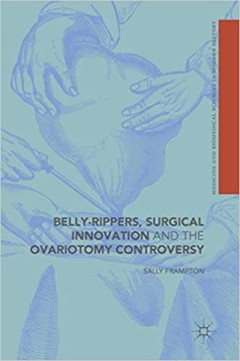Filter by

Handbook of Practical Immunohistochemistry: Frequently Asked Questions
In a conceptually current, quick-reference, Question & Answer format, the second edition of Handbook of Practical Immunohistochemistry: Frequently Asked Questions continues to provide a comprehensive and yet concise state-of-the-art overview of the major issues specific to the field of immunohistochemistry. With links to the authors Immunohistochemical Laboratory website, this volume creates a …
- Edition
- -
- ISBN/ISSN
- 978-1-4939-1577-4
- Collation
- XV, 764
- Series Title
- -
- Call Number
- 616.9

Machine Learning and Embedded Computing in Advanced Driver Assistance Systems…
This book contains the latest research on machine learning and embedded computing in advanced driver assistance systems (ADAS). It encompasses research in detection, tracking, LiDAR
- Edition
- -
- ISBN/ISSN
- 978-3-03921-376-4
- Collation
- -
- Series Title
- -
- Call Number
- 624 MAC

Agricultural Input Subsidies : The Recent Malawi Experience
Up to date review of theory and experience of agricultural input subsidies in low income countries, with new theoretical and empirical insights Detailed and comprehensive analysis of the Malawi Agricultural Input Subsidy Programme Strong emphasis on political as well as technical issues in policy and programme development and implementation Considers economy wide issues in agricultural input…
- Edition
- -
- ISBN/ISSN
- 9780199683529
- Collation
- -
- Series Title
- -
- Call Number
- 630 CHI a

Sustainable Food Systems : The Role of the City
This book places itself within the traditions and the ongoing activity of UCL’s Bartlett Development Planning Unit, and within its research cluster, Environmental Justice, Urbanisation & Resilience. It draws heavily upon my teaching for the Environment and Sustainable Development Masters. I owe an immense debt to all my fellow Development Planning Unit (DPU) staff, as well as past and prese…
- Edition
- -
- ISBN/ISSN
- 9781911307099
- Collation
- -
- Series Title
- -
- Call Number
- 630 BIE s

Agricultural Implications of the Fukushima Nuclear Accident
This book reports the results from on-site research into radioactive cesium contamination in various agricultural systems affected by the Fukushima Daiichi Nuclear Power Plant accident that occurred in March 2011. This is the second volume from the research groups formed in the Graduate School of Agricultural and Life Sciences of The University of Tokyo who have published the initial data in th…
- Edition
- -
- ISBN/ISSN
- 978-4-431-54328-2
- Collation
- -
- Series Title
- -
- Call Number
- 630 AGR

Anti-fragile ICT Systems
Modern societies cannot function without information and communications technology (ICT) systems. When ICT systems such as electronic government (e-government) systems, e-payment infrastructures, and mobile phone networks fail,users can still access alternative systems based on older technologies, but these alternatives are rapidly disappearing. E-government services are introduced on the Web …
- Edition
- -
- ISBN/ISSN
- 978-3-319-30070-2
- Collation
- XVIII, 151 halaman
- Series Title
- Simula Springer Briefs on Computing
- Call Number
- 624 HOL a

Aquaculture Perspective of Multi-Use Sites in the Open Ocean : The Untapped P…
The first-of-its-kind compilation that comprehensively explores the scientific, engineering, economic and policy aspects of marine aquaculture multi-use of offshore platforms A timely analysis of the rapid development of offshore energy production platforms and the massive projected global seafood deficit Individual chapters written contemporaneously with EU “Oceans of Tomorrow” developme…
- Edition
- -
- ISBN/ISSN
- 978-3-319-51159-7
- Collation
- XXII, 404 halaman
- Series Title
- -
- Call Number
- 630 AQU

Belly-Rippers, Surgical Innovation and the Ovariotomy Controversy
This open access book looks at the dramatic history of ovariotomy, an operation to remove ovarian tumours first practiced in the early nineteenth century. Bold and daring, surgeons who performed it claimed to be initiating a new era of surgery by opening the abdomen. Ovariotomy soon occupied a complex position within medicine and society, as an operation which symbolised surgical progress, whil…
- Edition
- -
- ISBN/ISSN
- 978-3-319-78934-7
- Collation
- XVI, 267 halaman
- Series Title
- Medicine and Biomedical Sciences in Modern History
- Call Number
- 617 FRA b

Surgical Infections
Surgical infections are caused by the breakdown of the equilibrium existing between organisms and the host. This may occur after a breach in a protective surface, as occurs after surgical trauma, changes in host resistance, or particular characteristics of the organism. The possible outcomes are abscess formation, local spread with/without tissue death, distant spread or resolution. A surgical …
- Edition
- -
- ISBN/ISSN
- -
- Collation
- -
- Series Title
- -
- Call Number
- 617 SUR

Bond Graph Model-based Fault Diagnosis of Hybrid Systems
This book presents bond graph model-based fault detection with a focus on hybrid system models. The book addresses model design, simulation, control and model-based fault diagnosis of multidisciplinary engineering systems. The text beings with a brief survey of the state-of-the-art, then focuses on hybrid systems. The author then uses different bond graph approaches throughout the text and prov…
- Edition
- -
- ISBN/ISSN
- 978-3-319-11860-4
- Collation
- -
- Series Title
- -
- Call Number
- 670.42
 Computer Science, Information & General Works
Computer Science, Information & General Works  Philosophy & Psychology
Philosophy & Psychology  Religion
Religion  Social Sciences
Social Sciences  Language
Language  Pure Science
Pure Science  Applied Sciences
Applied Sciences  Art & Recreation
Art & Recreation  Literature
Literature  History & Geography
History & Geography